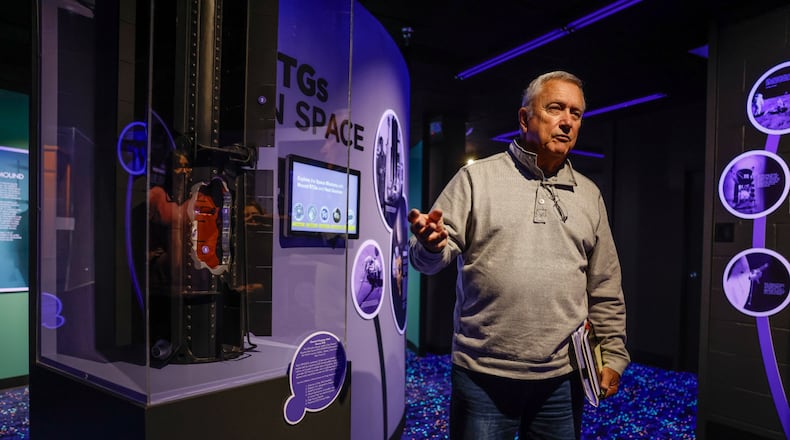The Miamisburg-based museum opened in 2018 with funding from the Legacy Management program at the Department of Energy. Dayton History is also involved. But the program funding is expected to end in September of 2025.
“We have between now and then to become self-sustaining,” said Jaclyn Miller, site and project manager for the Mount Cold War Discovery Center.
The museum offers tours for school groups and has some grants to offset the cost. The site has been trying to advertise their existence but drew back slightly to prioritize cataloguing some of the archives.
Miller said the one saving grace would be that if the center does close, the collection in the museum would move to Carillon Park. But it’s not clear what would happen to some of the other records that the Mount Cold War Discovery Center has, and Miller argues that it’s closer to the history of the Mound to have the museum on the site of where the research happened.
Plus, April Hauser, site manager for the Mound Development Coroporation, argues the museum sticking around would keep institutional knowledge of the nuclear work that was conducted at the site. More than $1 billion was put into cleanup to make it up to industrial standards and it’s safe to be on the grounds.
“That just shows that you can move past that age,” she said. “And people are getting more knowledge and better understanding through the educational programs they offer here and elsewhere, of that how we use that energy and how clean that energy is.”
But Hauser said people still can’t fish at the pond down the street, for example, and she worries that if no one is there and the site is turned into a nature preserve like other nuclear project sites, people will feel it’s ok to take soil from the site and use it to grow food, which could make people sick.
Doug Gabriel, president of the Mound Association and a former employee of the Mound, said a group of former Mound workers wanted to start a museum to show the legacy of the work done there.
Work done at the Mound still has an impact on the modern day, though it closed in 2006. Miller said some of the Space Race research done at the site has been requested by private companies who are working on space projects.
At least two Mound inventions are still considering cutting edge: the radioisotope thermoelectric generator, a type of nuclear battery, and the differentiating bubbler, a system to measure the amount of tritium, or radioactive hydrogen, in the air.
“There’s a historical marker down at the bottom of the hill that is part of the commemoration, but the whole idea of the museum was to honor the work that had been done,” Gabriel said.
The museum is open Wednesday to Saturday to the public and by appointment for groups. Admission is free. Call (937) 247-0402 for more information.
About the Author



